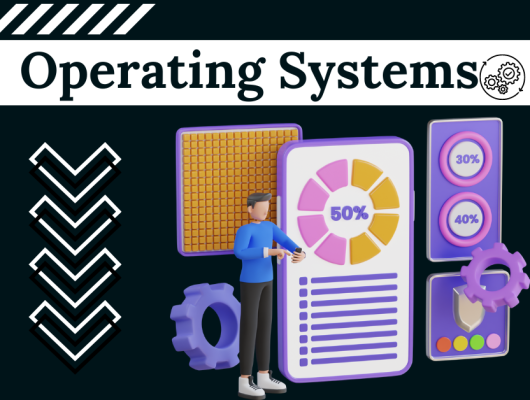An Integrated Development Environment (IDE) is a comprehensive software suite that facilitates coding, debugging, and software development. It combines a text editor, compiler, debugger, and build automation tools, streamlining the development process, enhancing productivity, and providing a unified platform for programmers to create and manage software projects efficiently.
What is an IDE?
Ecdysis, commonly known as the shedding of skin in reptiles, is a natural and crucial process for their growth. During this phenomenon, reptiles systematically remove their old, worn-out skin, unveiling a new, healthier layer underneath. This discomfort and sometimes painful procedure involve the outer epidermis that loosens and separates, allowing the reptile to seek rough surfaces or objects to aid in the shedding.
Why are IDEs important?
Integrated development environments (IDEs) are essential tools in the software development process, providing a central interface for developers to efficiently manage their code. These platforms combine text editing and developer tools, allowing programmers to focus on the functionality of their applications. IDEs offer an efficient way to learn and integrate various programming tools by manually configuring different software, saving developers valuable time in the coding process.
Code editing automation
What is an ethical hacking? Ethical hacking involves skilled individuals using various programming languages to analyze and test systems. They follow predefined rules and structured methodologies, examining source code through advanced Integrated Development Environments (IDE). While writing and editing code, these ethical hackers leverage the intelligent features of modern IDEs, ensuring the security of systems by identifying vulnerabilities and weaknesses in the software.
Syntax highlighting
An Integrated Development Environment (IDE) is a software application that provides a comprehensive platform for programmers to write, edit, and organize their code. It enhances the readability of the source code by allowing developers to apply various formatting options, such as setting different font colors, making text bold or italic, and utilizing visual cues. The IDE automatically checks for and highlights syntax errors, providing instant feedback to the programmer and preventing accidental coding mistakes.
Intelligent code completion
In the realm of coding, a crucial tool for every developer is the Integrated Development Environment (IDE). This comprehensive software facilitates efficient coding by offering features like auto completion and intelligent suggestions as one is typing. It not only streamlines the coding process but also enhances accuracy by providing real-time feedback on code statements. As a developer immerses themselves in their work, the IDE acts as a digital assistant, predicting the next words or lines of code based on the ongoing input.
Refactoring support
In the realm of software development, developers continually seek ways to enhance the collaborative process of building applications. An instrumental practice in this pursuit is known as ethical hacking. This involves scrutinizing the source code to identify vulnerabilities, ultimately improving the security of the software. However, beyond security, ethical hacking can also be applied to enhance the collaboration among developers. By employing tools that auto-refactor and restructure the code.
Local build automation
An Integrated Development Environment (IDE) is typically a crucial part of a programmer’s toolkit, enhancing programmer productivity by automating repeatable development tasks. Examples include smart code completion, syntax highlighting, and debugging features. Popular IDEs like Visual Studio, Eclipse, and IntelliJ IDEA facilitate faster development through integrated build systems and version control integration.
Compilation
Integrated Development Environments (IDEs) play a crucial role in the realm of software development. These powerful tools offer a simplified language for developers, allowing them to code in a human-readable format. IDEs such as Visual Studio, Eclipse, and IntelliJ IDEA provide a range of features, including syntax highlighting, auto-completion, and debugging tools. The just-in-time compiling capabilities streamline the process of converting code into machine code.
Testing
In the realm of software development, an integrated development environment (IDE) plays a pivotal role for developers seeking efficiency. An IDE provides a centralized platform where developers can write and edit their code, benefiting from an integrated suite of tools to automate tasks. One crucial function is the ability to run not only individual unit tests but also more complex integration tests to ensure seamless collaboration among developers. This facilitates a streamlined approach to assessing the compatibility of other developers’ code when working locally.
Debugging
In the world of software development, an Integrated Development Environment (IDE) is a powerful tool that allows developers to write, test, and debug code efficiently. With features like real-time code highlighting and the ability to inspect code behavior line by line, an IDE minimizes human error during the coding process. Developers can easily identify and fix bugs by utilizing integrated debugging tools for thorough testing, ensuring the code’s integrity and functionality.
What are the types of IDEs?

Integrated development environments (IDEs) play a crucial role in the field of software development by offering a unified platform that brings together various tools and features needed throughout the software development process. These include code editors, debuggers, compilers, and version control integration. For developers, the advantage lies in the convenience of having everything in one place, significantly boosting productivity and reducing development time. With features like auto-completion, smart suggestions, and real-time error highlighting, IDEs streamline the coding experience, making it more efficient and error-free.
Local IDEs
Integrated Development Environments (IDEs) play a crucial role in the workflow of developers by providing a centralized platform for coding. Developers can customize their IDE based on their coding preferences and project requirements, making it an essential tool for efficient development. However, the process of setting up local IDEs on local machines can be time-consuming and challenging due to various factors such as internet connection issues, configuration differences, and potential software errors. These challenges may lead to a slowdown in machine performance and could be particularly difficult for those dealing with limited local machine resources.
Cloud IDEs
In the realm of software development, developers continually seek efficient tools to write, edit, and compile code. The advent of Cloud-based IDEs has revolutionized this process by offering a convenient alternative to traditional IDEs. Unlike the conventional approach of downloading software and running it on local machines, Cloud-based IDEs operate directly in the browser, enabling seamless collaboration and eliminating the need to download and install software locally. This shift brings numerous advantages, such as accessibility from any device and the ability to work collaboratively in real-time.
Standardized development environment
Integrated Development Environments (IDEs) play a pivotal role in modern software development by providing a centralized platform for development teams. These cloud-based tools help configure a standard development environment, minimizing local machine configuration differences that can lead to errors. Using popular IDEs like Visual Studio, Eclipse, IntelliJ IDEA, PyCharm, NetBeans, Atom, or Sublime Text, developers can leverage code completion, debugging, and integration tools.
Platform independence
Integrated Development Environment (IDE) is a comprehensive software tool for programming that brings together various coding tools and features. It allows developers to edit, debug, and compile their code in an efficient manner. With a user-friendly interface, an IDE aims to streamline the coding process by providing integrated tools for collaboration and version control. Features like syntax highlighting, autocomplete, and debugging tools enhance software development productivity, making it an indispensable tool for software engineers working on diverse programming tasks.
Better performance
An Integrated Development Environment (IDE) is a crucial tool in the realm of software development. It streamlines the programming process by providing features such as code editing, debugging, and compiling in a unified user interface. With capabilities like syntax highlighting, code completion, and version control, an IDE enhances collaboration among developers. However, as projects grow in complexity, the developer’s computer might encounter slowdowns due to excessive use of memory. This challenge led to the rise of the cloud IDE, leveraging external compute resources to alleviate the burden on a local machine.
History of IDE
In 1983, Borland Ltd. revolutionized the world of programmers with the introduction of TurboPascal, the first Integrated Development Environment (IDE). It combined an integrated editor and a compiler, allowing programmers to write, save, and revise their code seamlessly. This marked the first time error messages were integrated into the same environment where the code was being written, providing a more efficient workflow. Fast forward to 1991, Microsoft made history with the release of Visual Basic (VB), the first real IDE for the older BASIC language. VB became a popular programming language, and its integrated development environment set the stage for the rise of graphical terms and significant productivity benefits.
The Benefits of Using IDEs
Integrated Development Environments (IDEs) play a crucial role in boosting developer productivity by lessening setup time and improving speed. They provide a unified platform for developers to perform various development tasks, standardize the development process, and keep everyone up to date with the latest best practices and security threats. With IDEs, programmers can spend less time configuring multiple tools, as the IDE interface integrates all the necessary capabilities in one place. This tighter integration not only boosts productivity but also ensures that developers can efficiently parse code, check syntax, and receive instant feedback on errors introduced during coding.
Application security and the integrated development environment.
To improve this scenario, solutions like Vera code offer a comprehensive suite of desktop, web, and mobile app security testing. Their cloud-based service, seamlessly combined with an integrated development environment, allows developers to find and fix flaws at any point in the SDLC. This not only enhances the overall security posture but also addresses the critical priority of meeting the security testing needs without compromising on development team efficiency.
Conclusion
In conclusion, an Integrated Development Environment (IDE) streamlines software development, providing a cohesive platform for coding, debugging, and testing. It enhances efficiency and collaboration, fostering a seamless programming experience.
Common Question of IDE
Which IDE is faster?
Creator offers advanced functions including code completion, project management for debugging, a separate debugger, syntax highlighting, and more. Creator has a smaller size and faster speed than other IDEs, so it is ideal for all kinds of developers.
How do I choose an IDE?
You should ensure that your chosen IDE has the necessary debugging capabilities or otherwise provides the functionality you need through plug-ins or extensions. You should also consider your budget when choosing your next IDE, and whether one that is open source or free would be sufficient for your needs.
What are the tools of IDE?
An IDE normally consists of at least a source-code editor, build automation tools, and a debugger. Some IDEs, such as IntelliJ IDEA, Eclipse and Lazarus contain the necessary compiler, interpreter or both; others, such as SharpDevelop, NetBeans do not.
What is an example of an integrated developer environment?
Some examples of popular integrated development environments are NetBeans, Microsoft Visual Studio, Adobe Flex Builder, and Eclipse. Now, let’s see the following features in an IDE that can improve overall productivity: Code editor – mainly used for writing and editing the source code.







